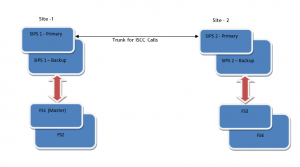Architecture
SIP Feature Server provides a scalable, load-balanced architecture that enables you to add Feature Server instances as your needs expand. A Cassandra-based data cluster maintains data consistency and performance across all instances.
Provisioning and dial plan setup
Initial program configuration occurs primarily in Genesys Administrator (GA). You can create users, devices, and mailboxes only in GA. To set up your dial plan, a highly configurable set of call disposition patterns, you can select either of two methods:
- the Feature Server administrative web application
- the existing SIP Server methodology, using GA
Administrators can can also use the administrative web application to provision users with devices, voicemail, and call settings.
Voicemail
SIP Feature Server combines with Genesys Voice Platform (GVP) and SIP Server to handle voicemail tasks.
The User administrative web application and the Telephone User Interface (TUI) enable users to specify mailbox settings and manage their voicemail.
Data management
SIP Feature Server uses Apache Cassandra data clusters to replicate data across the environment, achieving scalability and high availability. The SIP Feature Server installer deploys these clusters.
Multi-site deployment
You can deploy SIP Feature Server across multiple data centers, in an active-active configuration.
In multi-site environments, Feature Server supports voicemail functionality, including deposit, retrieval and deletion of voice messages, and MWI, for ISCC calls. Voicemail configuration is the same for both multi-site and single-site deployments.

